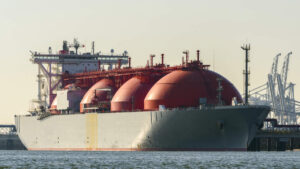Got Gas: Blackout fears reinforce need for gas and Macquarie’s cash splash shows top bank agrees

Averting the threat of blackouts will require firming sources of power like batteries and natural gas. Pic: Getty Images
Welcome to Got Gas, where Stockhead senior energy journalist Bevis Yeo gives you the lowdown on the news and insights you need to know in the ASX energy sector. This time, he examines why gas is still needed to avert the threat of blackouts.
Blackout fears in New South Wales may been brought about by increased energy use for cooling and unplanned maintenance at the state’s ageing coal-fired power plants, but it does reinforce the stark need to secure domestic gas supplies.
Earlier this week, the Australian Energy Market Operator was forced to request all available generation and transmission resources be deployed, and the procurement of additional reserves in order to be ready to meet potential energy demand.
While the blackout concerns were averted by cooler weather, it is worth noting that all available generation here typically means a combination of batteries and peaking gas generators.
There is little doubt that renewable generation and battery backup will grow in the near and long term to replace more of the ageing coal fleet but energy demand is also growing and the pace of adoption might still fall behind what is actually needed (particularly with batteries).
Aside from the unnecessary distraction caused by the Coalition’s insistence that nuclear can answer our energy needs – newsflash, it doesn’t – the key for ensuring that peak power demand can be met still lies with gas peaking plants.
Gas woes worse than thought
The problem of course is that supplies of natural gas earmarked for domestic use are declining, a fact the AEMO has acknowledged though EnergyQuest thinks things are worst then officially forecasted.
In a recent report, the energy consultancy said the east coast would experience shortages from 2026, calculating that there was only enough gas to meet 70% of NSW and ACT’s needs in the winters of 2026, 2027 and 2028.
Matters aren’t any better for Victoria, which has been reliant on ageing oil and gas fields off its coast, with EnergyQuest saying the state would need to source 32% of its gas from LNG imports from winter 2028.
Not great news for consumers as it will expose them to more expensive LNG export pricing but music to the ears of Andrew Forrest’s Squadron Energy, whose Port Kembla LNG import terminal near Wollongong is nearing completion.
While backing renewables as the primary answer, Squadron’s chief executive officer Rob Wheals also spruiked gas as a firming power source, saying that it – and batteries – could be deployed much faster than alternative technologies.
He of course went on to say that the company’s Port Kembla facility was “the only solution capable of resolving Australia’s looming domestic gas shortage by guaranteeing supply”.
Financiers might have finally cottoned on that Australia’s domestic gas supply woes are starting to come to a head and have moved to ensure that funding is available to gas companies on opposite sides of the country.
ASX energy stocks getting funded
While Squadron Energy may argue that LNG imports mean that we don’t need to find new gas fields, there are still a number of plucky juniors in Australia that disagree and it seems at least one financier that thinks they are right.
Empire Energy (ASX:EEG) has just secured a $65m financing package from Macquarie Bank in relation to its gas operations in the Beetaloo Sub-basin, Northern Territory.
The company, which spudded its first full-scale pilot development well (Carpentaria-5H) last week, signed off on the financing package following what managing director Alex Underwood described as an “extensive competitive tender process” that provides the company with the “best terms currently available in the debt market”.
Macquarie already has an existing financing relationship with EEG that stretches back 15 years and will be providing the company with a $30m R&D facility to fund exploration, appraisal and development activities – including Carpentaria-5H and construction of infield infrastructure.
It also provided a $5m Performance Bond Facility to meet the company’s Northern Territory environmental bonding obligations as well as a $30m Midstream Infrastructure Facility to finance refurbishment and construction of the Carpentaria gas plant and associated infrastructure.
Underwood adds that the financing package represents a key milestone in EEG’s goal of moving into the pilot production from the Beetaloo from 2025 to first meeting demand in the NT before the broader gas needs of Australia’s east coast.
Carpentaria-5H is central to this as it incorporates learning from the four wells drilled earlier in EP187 and is designed to have a larger well bore diameter and a long 3000m horizontal section that will allow for more fracture stimulation stages and as a result higher gas flow rates.
Macquarie is also reaching across the Nullarbor, approving the first $60m tranche of funding for Strike Energy’s (ASX:STX) South Erregulla peaking gas power station development.
This was accompanied by terms to increase the size of the overall funding package up from $153m to $217m thanks to the inclusion of a $64 million 7-year asset finance lease over the South Erregulla reciprocating gas engines and other proposed additional procurement packages.
STX expects Macquarie to proceed to credit approval on South Erregulla allocations of the upsized package including the lease within the next month, which will lead the two parties to finalise and execute the definitive financing documentation.
However, the initial funding tranche was likely the final tick left for the company to sign off on the final development decision for the integrated 85 megawatt peaking gas plant, which is expected to start operations in October 2026.
It will be powered by gas sourced from the South Erregulla field, which has proved resources of 37 petajoules – enough for a project life of more than 25 years.
While hardly enough to plug any expected future gaps in energy supply, it does serve as part of the overall solution and will give STX a source of revenue that could help fund future developments.
Related Topics

UNLOCK INSIGHTS
Discover the untold stories of emerging ASX stocks.
Daily news and expert analysis, it's free to subscribe.
By proceeding, you confirm you understand that we handle personal information in accordance with our Privacy Policy.








